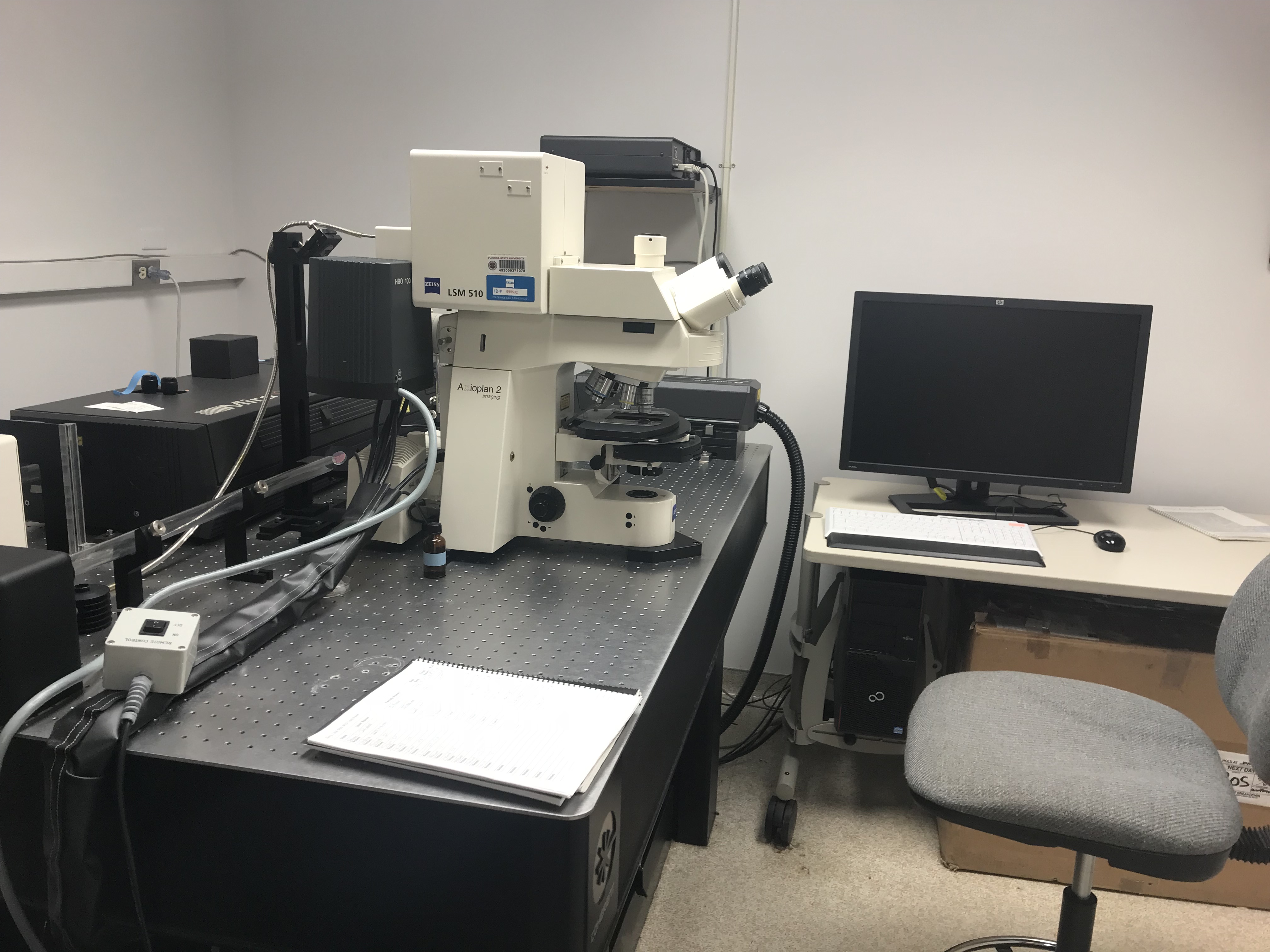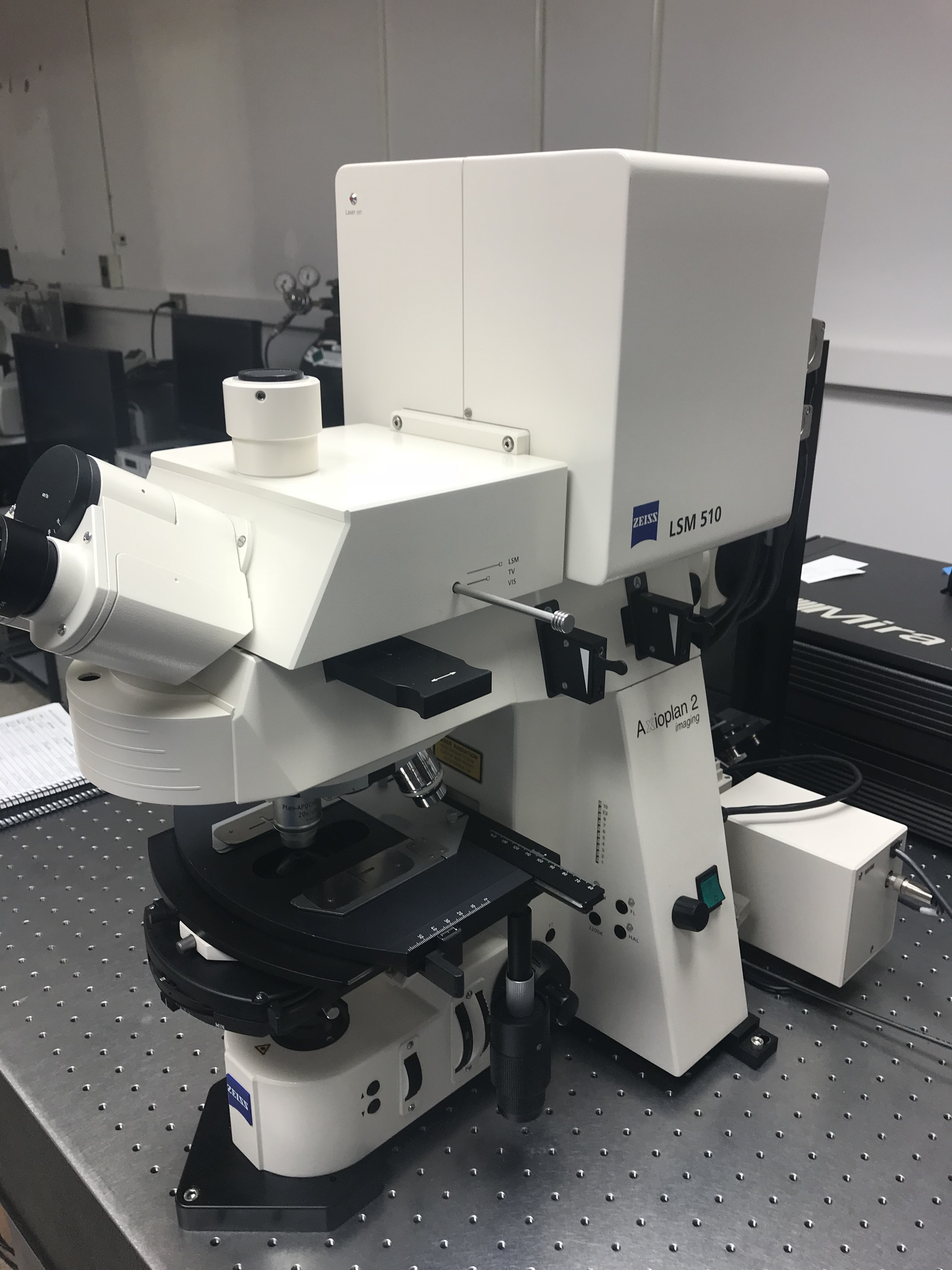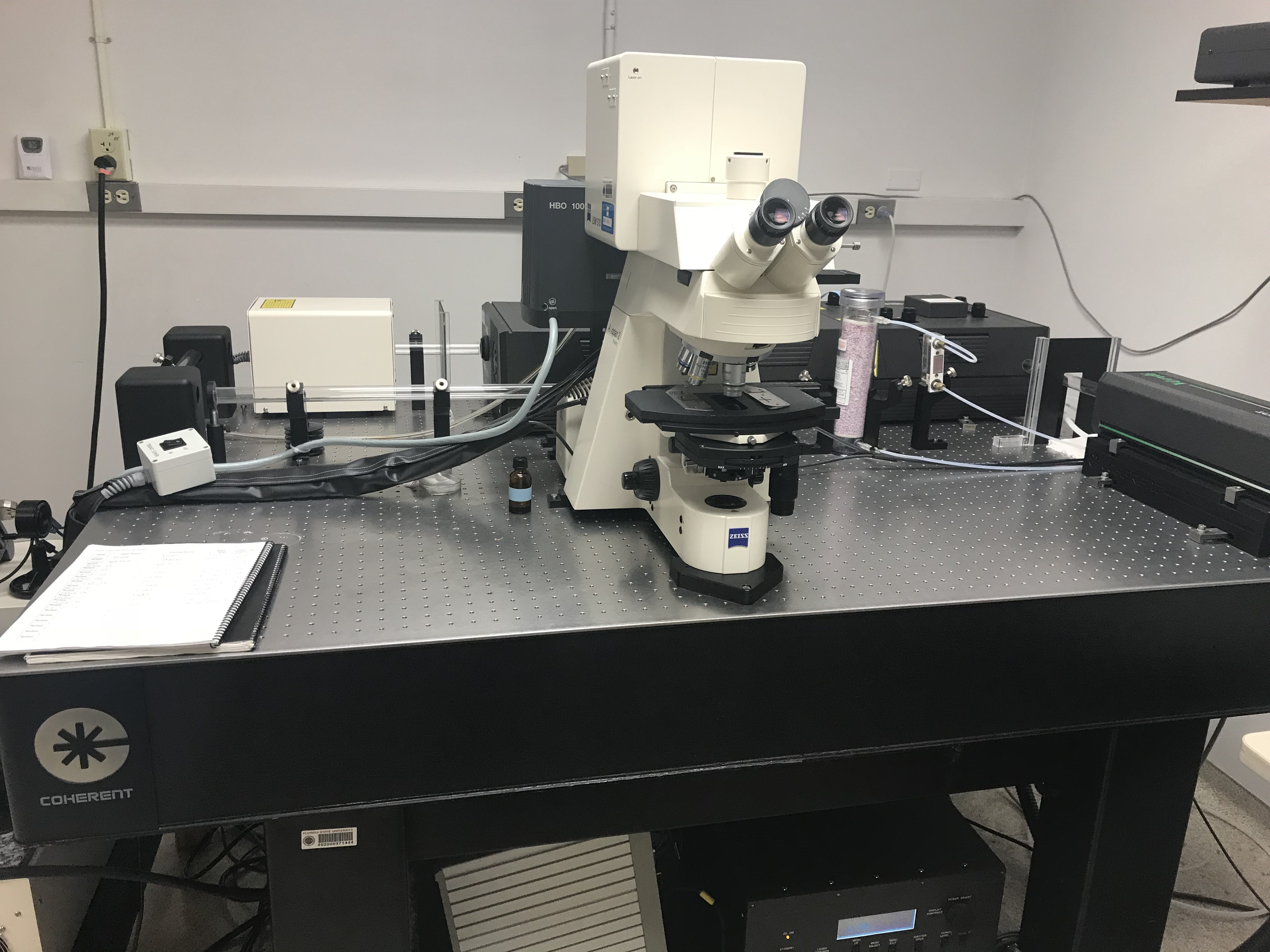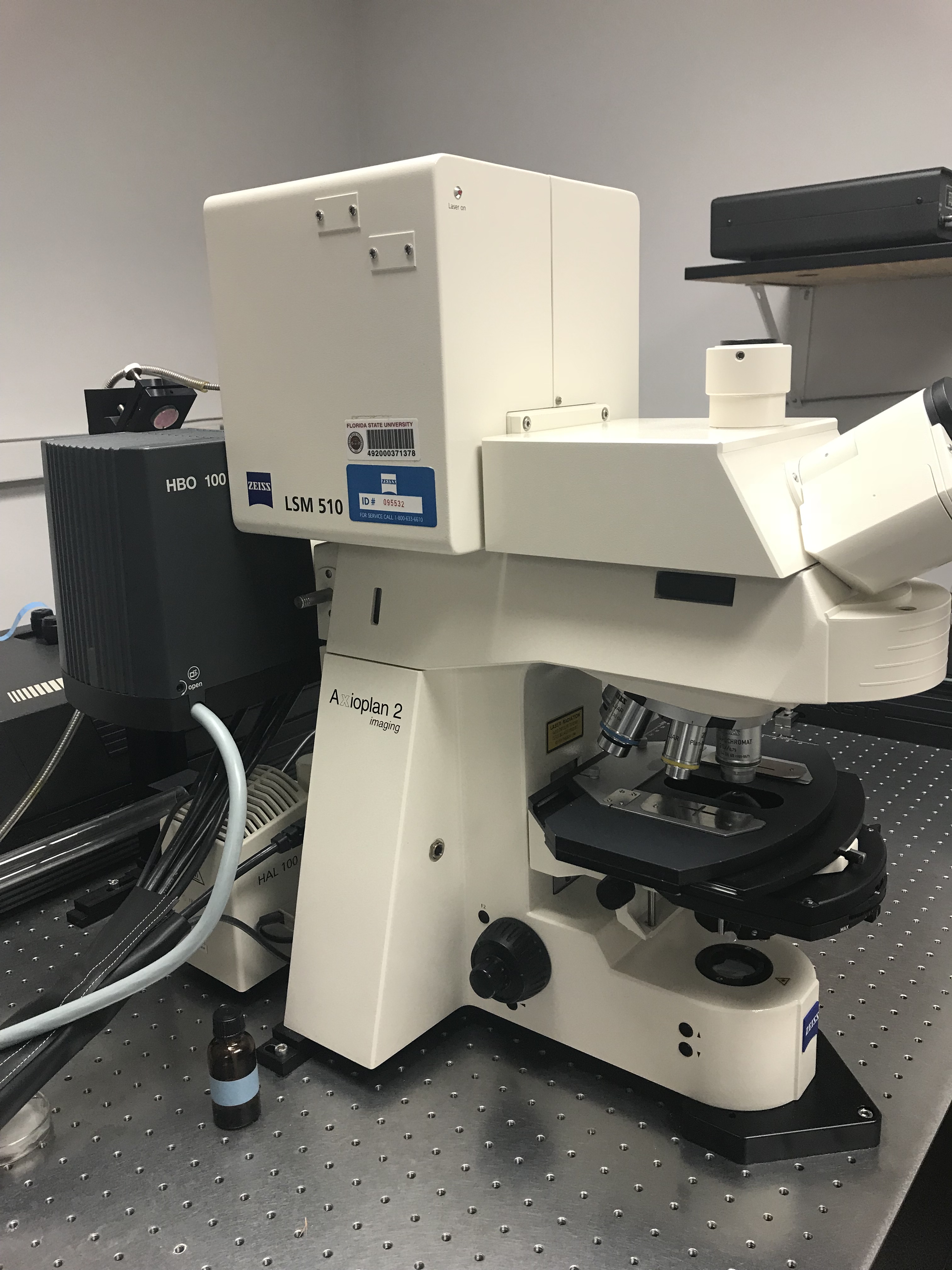
The LSM 510-NLO is a laser point-scanning confocal system based on the Zeiss Axioplan 2 imaging model upright microscope, and controlled through Zeiss Zen 2009 software. It is equipped with four lasers allowing excitation and collection of fluorescence e
Specifications:
- General Features:
• The microscope stand is equipped with a mercury vapor short arc lamp for visual fluorescence observation using conventional fluorescence filter sets, which are switched by a motorized reflector turret. The objective nosepiece is also motorized, allowing software control of objective selection. The stand incorporates a motorized focusing drive (Z axis) that makes possible software control of image stack acquisition after user setup of range and step size for the stack. The focus drive also operates to automatically lower the stage before each motorized objective change.
• Three photomultiplier detector channels for fluorescence allow simultaneous image acquisition in multiple-label specimens; a transmitted light channel has an additional photomultiplier.
• Pinholes for each channel can be optimized in diameter and XY position by software-controlled servo motors. Precise software control of pinhole diameter allows identical optical sections to be obtained in each confocal channel, facilitating simultaneous registration of multiple fluorescence signals.
• Two-mirror scanning system allows wide area scanning, with field size freely selectable between 4x1 and 2048x2048 pixels. The XY scanning field can be rotated through 360 degrees without having to rotate the specimen itself. The reduced-size scanned area can be positioned freely within the full field, with the zoomed image being automatically centered during scanning without repositioning the microscope stage.
• The three lasers in the visible-light laser module are coupled to the scan head through a single polarization-preserving optical fiber, simplifying software-controlled collimation with the objectives. Acousto-optical tunable filters (AOTFs) modulate the brightness for each laser wavelength within microseconds.
Lasers:
• Argon-Ion - 458/477/488/514 nm
• Helium-Neon - 543 nm
• Helium-Neon - 633 nm
• Titanium:Sapphire – tunable from 700 to 980 nmThe Titanium: Sapphire laser is a Coherent Mira Model 900-F, a modelocked ultrafast pulsed laser (76 MHz) that produces sufficient power in pulsed mode to generate two-photon excitation in the focal plane, at one-half the wavelength of the incident near- infrared beam. Since excitation by this mechanism is only possible in the plane of focus, no pinhole is required in the detector plane, improving detection efficiency. The laser design achieves modelocking through a non-linear optical (NLO) phenomenon referred to as Kerr Lens Modelocking. The NLO laser is typically used in the BSIR to excite fluorophores such as DAPI, by the two-photon mechanism, with a number of advantages over excitation at UV wavelengths.
Zeiss Objectives:
• 10x Plan-NEOFLUAR – 0.30 NA
• 20x Plan-APOCHROMAT – 0.75 NA
• 40x F FLUAR – 1.30 NA oil
• 63x Plan- APOCHROMAT – 1.40 NA oil
• 100x Plan-APOCHROMAT – 1.40 NA oil




